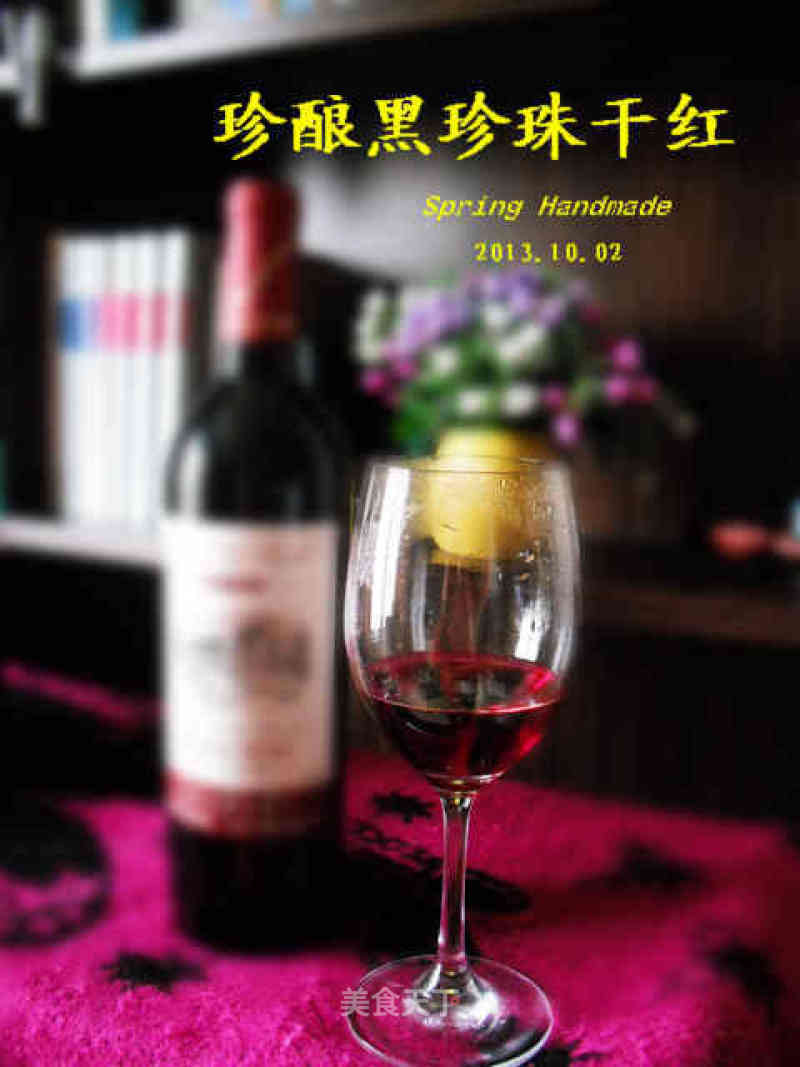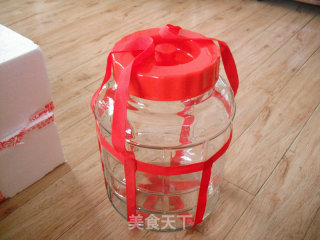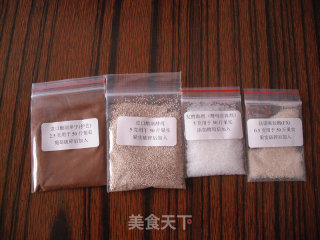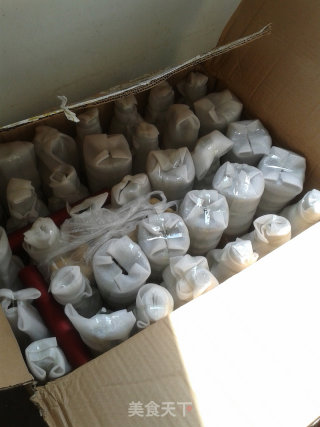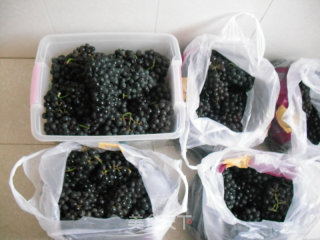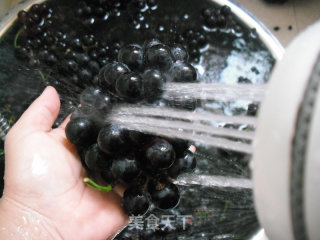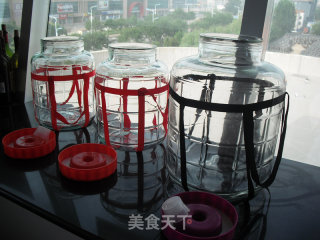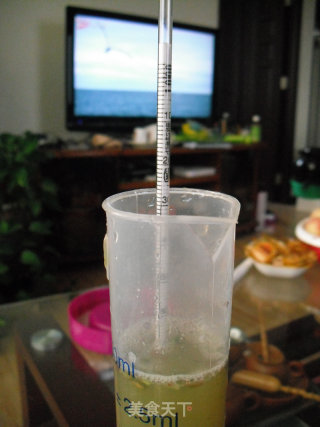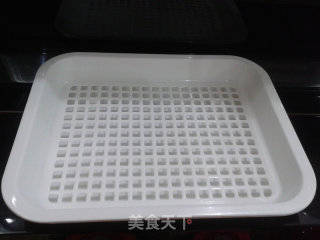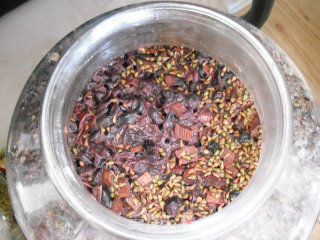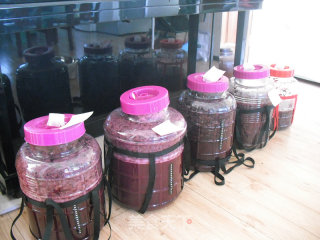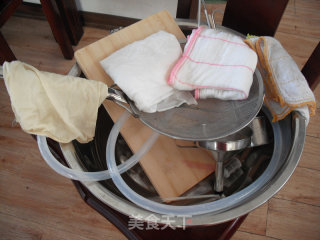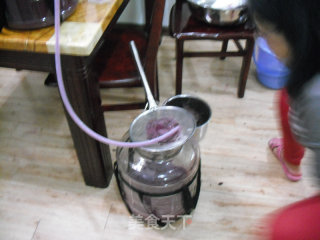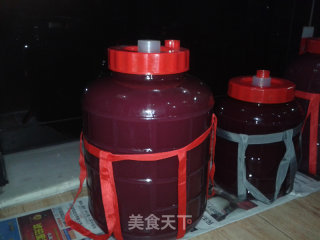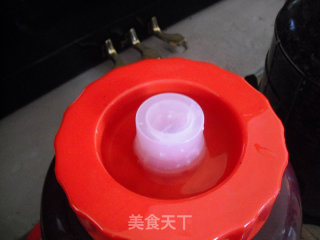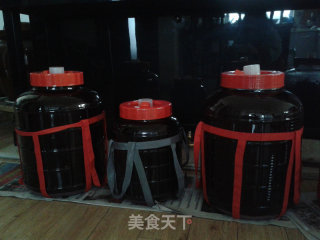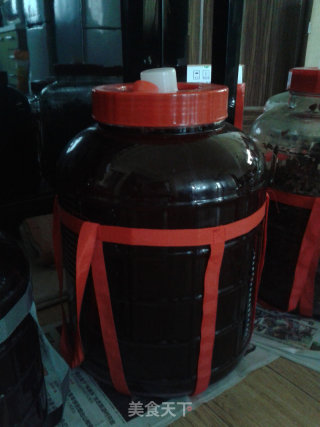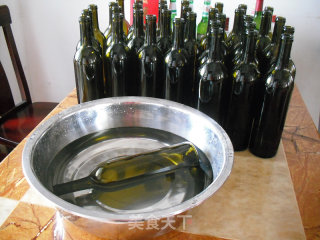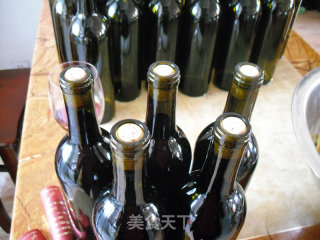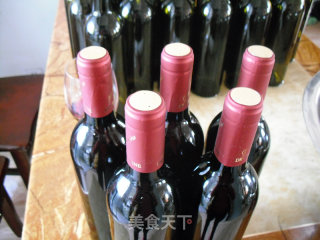Homemade Black Pearl Dry Red
1.
Prepare the wine bottle in advance. (The number of wine bottles is calculated according to the wine yield rate of 80%. The other large, medium and small models should be prepared, and there is room for choice during the second and aging.) Wine bottles 25 liters, two 15 liters, one 10 liters, one 5 liters, and one 2.5 liters One
2.
Prepare various auxiliary materials (as mentioned above) and auxiliary tools. Auxiliary tool electronic scale (gram weight) 1 brix meter 1.0, 0.9 each measuring cylinder 1 alcohol meter 1 thermometer 1 filter 200 mesh 1 filter bag 1 siphon 1 2 meter bottle brush 1 1-2 bottles of medical alcohol (500ml) clean kitchen towels, 2 large stainless steel basins, 2 large spoons with long handles, 1 broken net 1-2 (or use a double-layer tea tray with 0.8 cm grid instead)
3.
The following can be purchased during aging (prepared at 80% yield). 50 empty wine bottles, 50 corks, 50 wine labels, 50 sets of heat-sealing caps, 50
4.
Fresh wine grapes, carefully check for rotten fruits, remove them in time
5.
Fresh wine grapes, carefully check for rotten fruits, remove them in time
6.
Soak the grapes in clean water, and rinse them in clusters.
7.
Soak the grapes in clean water, and rinse them in clusters.
8.
Put it on a clean table to dry the water vapor.
9.
During the drying of the grapes, the wine bottles are disinfected one by one. First use the ratio of heavy potassium sulfite (12.5g: 80 kg of water) to clean the wine bottle. The emphasis can play a bactericidal effect. Wipe the water in the bottle with a kitchen cloth boiled in boiling water, and then wipe it with medical alcohol for disinfection.
10.
Began to shatter. Put the heavy potassium sulfite into the bottom of the wine bottle, and add 12.5 grams per 100 kilograms of grapes at a ratio of 1/3, which is 2.58 grams, to start crushing the grapes. Stir well after crushing. Put the wine bottle in a cool place
11.
Take the grape juice, use the 1-1.1 hydrometer to measure the sugar content, and the measured specific gravity is 1.072, which is converted into a sugar content of 162 grams. The self-contained sugar can produce 9.5% wine. To increase the alcohol content, you need to add some rock sugar or white sugar. For sugar content conversion table, please refer to my log http://home.meishichina.com/space-24092-do-blog-id-540078.html:
12.
Note: Breaking is a time-consuming and laborious physical work, as anyone who has done wine knows. My 2013 grapes were crushed by hand. Three batches of grapes were boiled for three nights, and the last one boiled until more than 3 o'clock in the morning. In 2014, a double-layer tea tray with Camellia was used to replace the broken net, and the broken net was completed in 1.5 hours for three people of 150 kg.
13.
Add pectinase 4 hours later, the ratio of pectinase to grapes is 1 g: 100 kg. Melt the pectinase with purified water or cold water in a ratio of 1:10, then add it to the grape juice and stir evenly. You can use about half a meter of long-handled large spoon for stirring, and sterilize it with alcohol before each use. Then add yeast polysaccharide, yeast nutrient salt (yeast additives), oak flakes, wine tannins, etc., and cover the bottle cap, do not tighten it, in order to facilitate the discharge of the gas produced by the fermentation and the yeast respiration.

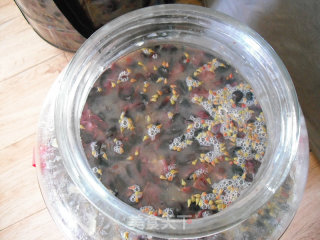
14.
Half a day after the addition, the fermentation begins. Stir 2-3 times a day, press the grape skins into the grape juice and soak them in the wine juice to extract the tannins and other health ingredients from the grape skins. The fermentation temperature should not exceed 30 degrees, and the temperature should be lowered if it exceeds 30 degrees. The temperature in Yantai during this period is 20-22 degrees, and the maximum fermentation temperature is 28 degrees.

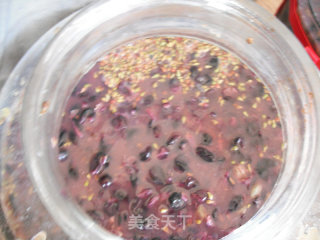
15.
On the third day, the fermentation was obvious; on the fourth day, the fermentation began to be vigorous, the skin juice separated, and many bubbles could be produced. According to the sugar content measured above, add rock sugar or white sugar and mix well. This time it is planned to be 13% dry red, add one degree, and add 17-19 grams of sugar per liter. The amount of sugar added is calculated as follows: The amount of sugar added in grams = the number of liters of grape juice × (the desired degree of winemaking-according to the measured grape juice Check the specific gravity to get the corresponding degree of the wine)×18 (or 17 or 19) The sugar content of this grape juice is 9.5% The sugar content: (13-9.5)*19g/kg*62kg (grape weight)*80% (Wine yield) = 3298 grams
16.
The fermentation is violent and the skin juice separates. From the seventh to the eighth day, the temperature of the wine mash drops to room temperature or the sugar content drops to 0.997, stop fermentation,
17.
Boil water to sterilize various tools and utensils. If you cannot use boiling water for disinfection, you can use heavy or alcohol disinfection. Then prepare to filter.
18.
Using the siphon method, the crude wine is siphoned to a new sterile bottle for aging, and the grape skin residue is filtered for other purposes.
19.
When aging, be sure to fill the wine bottle to prevent air infiltration and oxidation of the wine juice.
20.
Tighten the bottle cap, and add a one-way valve to seal the top air outlet. There is no one-way valve. Just like me, use the one-way cap that comes with the wine bottle to cover the exhaust port and seal it with water. During this period, air bubbles are expelled. One day later, lactic acid bacteria were added. Usage: Lactic acid bacteria, 1 gram is used for 200 kg of grapes. Lactic acid bacteria are dissolved in cold boiled water at a ratio of 1:10. After 15 minutes of activation, pour into the crude wine and stir evenly.
21.
The dry red in the second shot. The second fermentation is 20-30 days. The temperature is controlled at 20-15 degrees. The outer cover of the wine bottle is thin and protected from light. It is necessary to check whether the water on the cover floods the exhaust valve from time to time, and refill the water in time to prevent air from entering.
22.
After the second fermentation is over, the upper layer of sake in the bottle is filtered to a new sterile bottle. The grape skin tannins are added and the oak chips are aged for six months. For long-term preservation, 3-5 grams of weight can be added to prevent wine deterioration and oxidation (12.5 grams per 100 kilograms of grapes is 2/3). If it can be drunk within one or two years, and the brewing, filtration and disinfection process is in place, there is no need to emphasize it here.
23.
After six months of aging, the sake is filtered again into a new sterile bottle, and oak chips are added for 5-6 months of aging. Or bottling and continue aging. The temperature is 18-15 degrees. It will be better to be bottled after one year of aging, and the oak aroma will be more prominent.
24.
When bottling, all tools (funnels, wine grapes, etc.) are sterilized by boiling water for a few minutes. The wine bottles are sterilized first, and then filled with alcohol.
25.
Pay attention to leaving a space for the cork when filling. The cork stopper can be imported from 21-22mm with good quality. Use a rubber hammer to beat a section of the cork for a few times to make it smaller, and then force it into the wine bottle. It's more labor-saving
26.
Put on the heat-sealing cap and blow it with a hair dryer to shrink it.
27.
Label the wine bottle and the gorgeous homemade dry red was born. Store in a cool, dark, ventilated and dry place.
28.
A sample of the wine at the end of aging. Both color and fragrance.

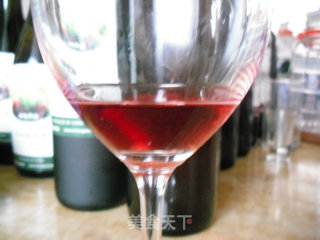
Tips:
1. The whole process is oil-free and water-free.
2. Every time the hands and utensils are in contact with the wine juice, the poison should be disinfected to avoid the infection of bacteria.
3. Always pay attention to prevent the wine juice from oxidation, discoloration and deterioration.
Description of wine-making accessories:
Imported yeast from France: It converts sugar in wine into alcohol, which can prevent the oxidation of wine caused by the slow reproduction of wild yeast, and release the aroma and taste of grapes to the greatest extent. Ensure successful fermentation. Although there are traces of wild yeast on the surface of grapes, if they are cleaned, it may cause fermentation failure, and the quality is far from professional yeast.
Pectinase: 1. Decompose the pectin on the grape skin. The grape juice and the phenolic substances in the grape skin are fully contacted and leached into the wine, thereby increasing the content of health ingredients in the wine. 2. Improve the yield of wine. 3. Contribute to the clarification of wine.
Wine-making tannins: also called color-protecting tannins, which are added to the grape juice during fermentation to protect the anthocyanins in the grapes, which helps to stabilize the color of the wine.
Grape skin tannins: The tannins extracted from the grape skins are perfectly dissolved in the wine. The aging is added to the nine, which can make the wine body structure stable and delicate, firm and full, and has a high health effect.
Yeast nutrient: It is added to grape juice during fermentation to provide nutrition to the yeast and prevent the yeast from being in a nitrogen-deficient state, leading to the termination of fermentation, and at the same time, it can reduce the formation of volatile acid.
Zymosan: Natural organic matter extracted from yeast. Adding grape juice to the wine during fermentation can make the wine taste fuller and softer, and the wine body more coordinated; it can also be used after fermentation to make the coarse wine smooth and soft, and enhance the round taste.
French imported moderately toasted oak chips: adding to wine during home fermentation and aging can increase the oak aroma in the wine and increase the structure of the wine. Traditional wine making uses oak barrels.
Lactic acid bacteria: After the alcoholic fermentation of the wine is filtered, it is added to the crude wine to convert the sour malic acid in the wine into soft lactic acid, thereby reducing the acidity of the wine, which is conducive to the formation of the complexity of the wine flavor.
Soap clarifier: After the wine is brewed, it will gradually become clear with the passage of time. If there is no tendency to become clear after a month, and if you want to drink the wine earlier, you can choose a clarifier for clarification.
Sulfur dioxide: Grape juice contains nutrients such as sugar, which is easy to breed bacteria. Therefore, sulfur dioxide is widely used internationally to prevent wine deterioration and oxidation. Generally, ordinary wine uses bisulfite to provide sulfur dioxide (1 gram can provide 0.57 grams of sulfur dioxide after dissolution. High-quality winery and oak barrel wine half use sulfur tablets to provide sulfur dioxide during aging, and one slice can provide 5 grams of sulfur dioxide.

